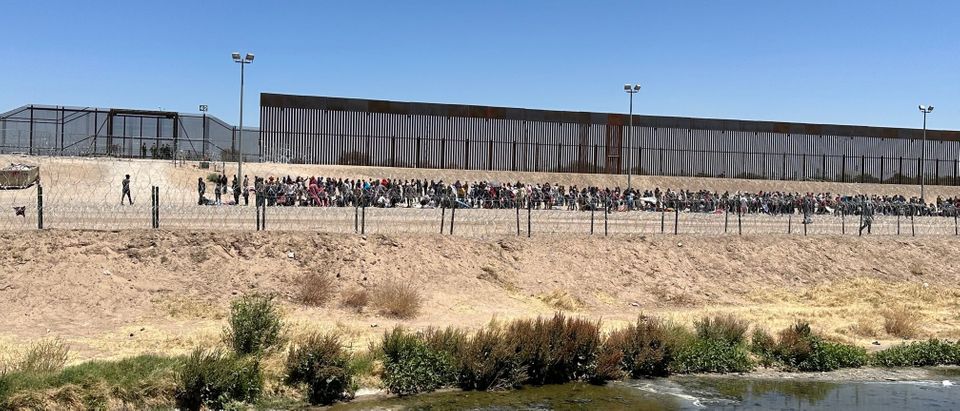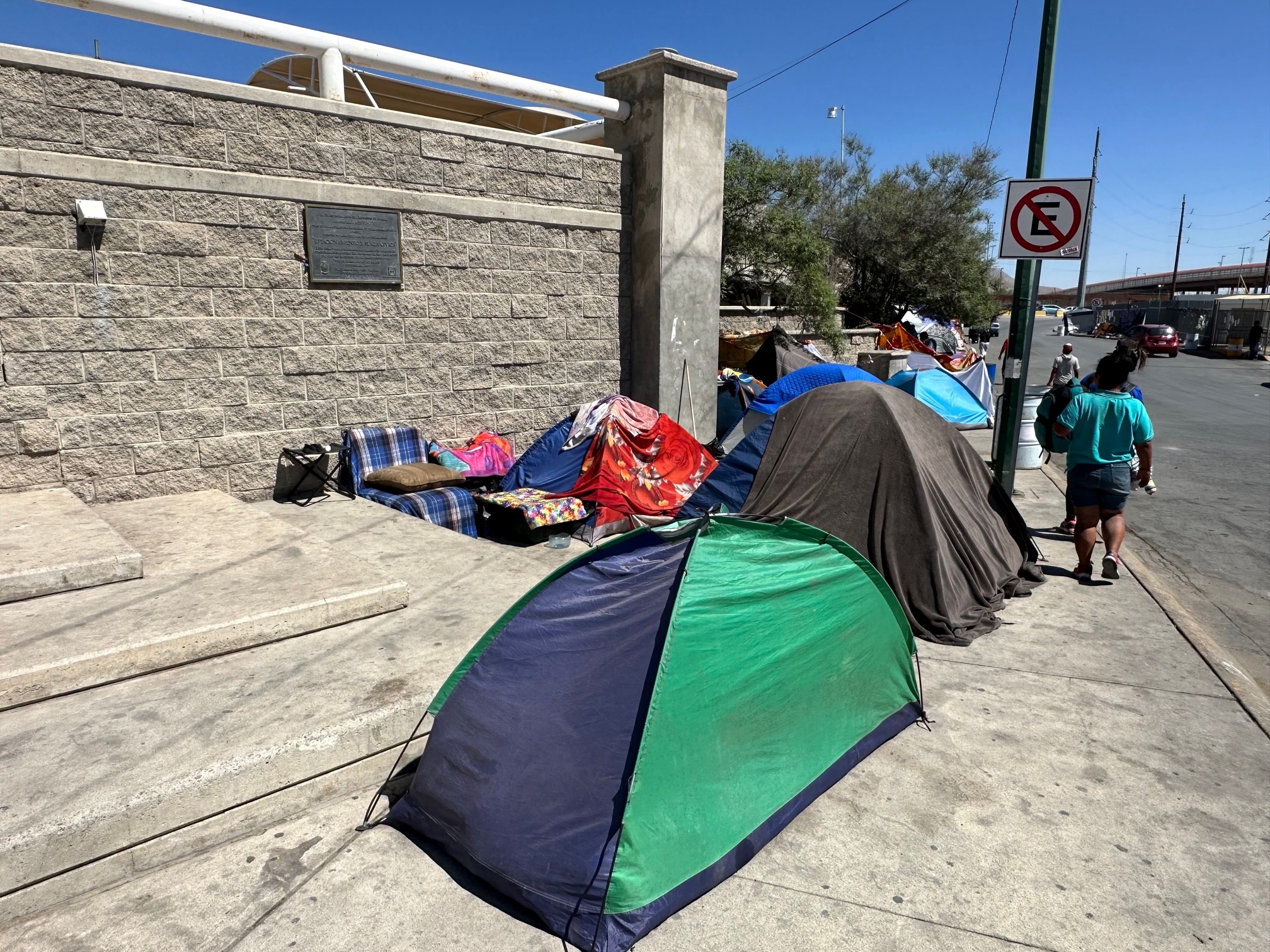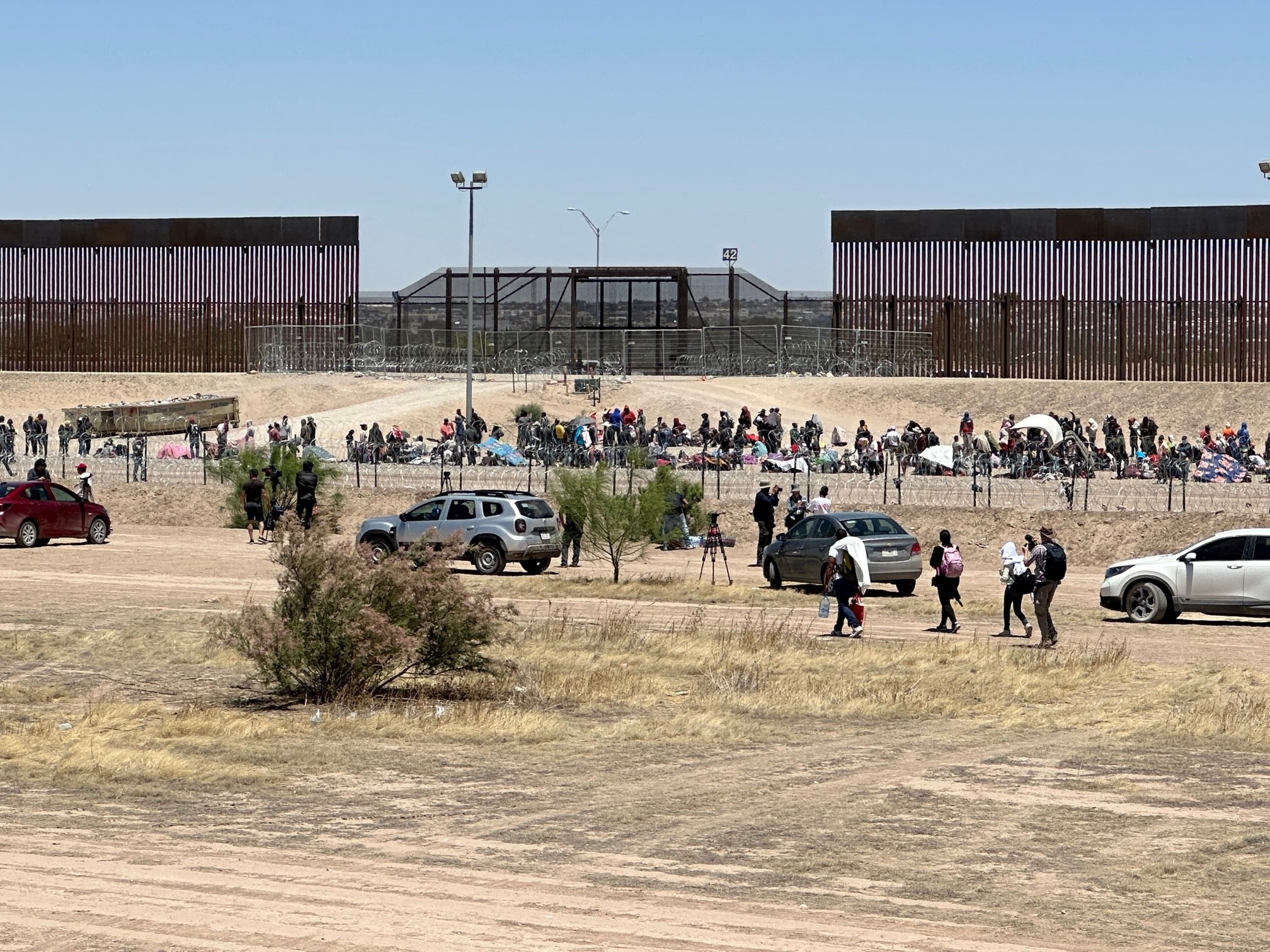ROY MAYNARD: Yes, Migrants Believe Biden Has Rolled Out A Big Welcome Mat

Photo courtesy of Roy Maynard
CIUDAD JUAREZ, MEXICO — Jorge Mijares left Venezuela months ago — last November, he says. He’s been in Ciudad Juarez, across the Rio Grande River from El Paso, for four weeks. But he planned to cross over Thursday night, as Title 42 immigration restrictions ended.
“I have the app,” said Mijares, 54. “I’m just waiting for it to tell me when to go.”
He’s not concerned about the Biden administration’s warnings against migration. After all, he has many friends who have made it across — safely.
He has no final destination in mind; he has no family in the U.S. But one friend is in Denver, and he might go there. He was a driver in his hometown of Maracay, and he hopes to find similar work here.
For Jorge and other migrants sleeping in shelter and tents on the Mexico side of the border, the politics are irrelevant. Title 42, Title 8 and other measures to limit the inflow of illegal immigrants can’t drown out the real messaging of the Biden administration: The U.S. border is wide open.
“It doesn’t really matter what the U.S. government says, its actions don’t match its words,” says Rodney Scott, former Chief of the U.S. Border Patrol and now a fellow with the Texas Public Policy Foundation. “What the Biden administration is doing totally overrides what the administration is saying.When would-be migrants see their friends and families posting from America, they come. And they tell their friends. Every successful crossing encourages more.”
And the criminal cartels — the ones truly in control of the southern U.S. border—are more than happy for the additional business.

Photo courtesy of Roy Maynard.
“This gives cartels more people to use as human shields, as cover for more nefarious criminal acts — smuggling in humans, criminals and narcotics.”
Jorge’s journey has been long. Setting out from his hometown of Maracay, Venezuela, he’s taken every form of transportation available — including his own two feet. Several times, he’s run out of money and had to stop to work and earn more.
He walked most of the way from Oaxaca to Mexico City, carrying what water he could. He talked about killing — and eating — a rattlesnake on that leg of the journey.
“I just want to get in, I just want to work,” he said. He could see the wall from the shelter he built with other migrants in the lee of the Juarez city hall. He could also see the chained-off migrant center where 40 people died in a fire in March.
On Thursday, Jorge was one of tens of thousands of migrants waiting at the border. He was patient, waiting his turn.

Photo courtesy of Roy Maynard.
Not everyone is that patient. Enrique Valenzuela is the general coordinator for the Chihuahua State Population Council, and part of his job is helping migrants pass through his state safely.
“People get here to Juarez, and they see their dream across the river,” Valenzuela said. “And they’re not willing to settle for Juarez.”
In other words, if they don’t cross legally, they’ll cross illegally.
“The Venezuelans, particularly, believe in their hearts that once they tell U.S. authorities their story, they’ll be let in,” Valenzuela said. “Others, they’d rather use the gates.”
Those gates include Gate 42, where National Guard troops could be seen moving aside rolls of razor wire to allow immigrants into the no man’s land on the Mexico side of the fence — a staging area for entry into the U.S.
Later on Thursday, the Border Security Coalition led by TPPF held a town hall meeting on immigration issues at Grace Christian Center. Mark Morgan, a visiting fellow with the Heritage Foundation, warned the audience that hope—the kind would-be migrants draw from the mixed messaging coming from the U.S.—could be deadly.
“They’ll sacrifice it all,” Morgan said. “If you give them hope, they’ll put their lives in the hands of the criminal cartels. If you truly want to save lives and improve lives, you shut down the borders and work on legal immigration.”
Even as he spoke, the gates along the border wall were being opened, and migrants began moving through.
No comments:
Post a Comment